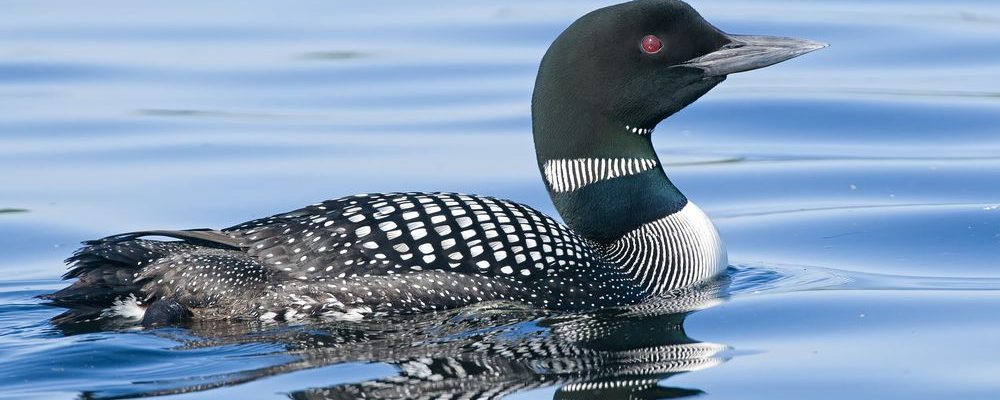- The Common Loon swims underwater to catch fish, propelling itself with its feet. It swallows most of its prey underwater. The loon has sharp, rearward-pointing projections on the roof of its mouth and tongue that help it keep a firm hold on slippery fish.
- Loons are water birds, only going ashore to mate and incubate eggs. Their legs are placed far back on their bodies, allowing efficient swimming but only awkward movement on land.
- Loons are agile swimmers, but they move pretty fast in the air, too. Migrating loons have been clocked flying at speeds more than 70 mph.
- A hungry loon family can put away a lot of fish. Biologists estimate that loon parents and their 2 chicks can eat about a half-ton of fish over a 15-week period.
- Loons are like airplanes in that they need a runway for takeoff. In the case of loons, they need from 30 yards up to a quarter-mile (depending on the wind) for flapping their wings and running across the top of the water in order to gain enough speed for lift-off.
- Loons are well equipped for their submarine maneuvers to catch fish. Unlike most birds, loons have solid bones that make them less buoyant and better at diving. They can quickly blow air out of their lungs and flatten their feathers to expel air within their plumage, so they can dive quickly and swim fast underwater. Once below the surface, the loon’s heart slows down to conserve oxygen.
- Migrating Common Loons occasionally land on wet highways or parking lots, mistaking them for rivers and lakes. They become stranded without a considerable amount of open water for a long takeoff. A loon may also get stranded on a pond that is too small.
- The Common Loon is flightless for a few weeks after molting all of its wing feathers at the same time in midwinter.
- Like many young birds, juvenile loons are really on their own after mom and dad leave at about 12 weeks. The parents head off on migration in the fall, leaving juveniles to gather into flocks on northern lakes and make their own journey south a few weeks later. Once the juveniles reach coastal waters on the ocean, they stay there for the next two years. In the third year, young loons return north, although they may not breed for several more years (on average they are six years old when they start breeding).
- The oldest recorded Common Loon was a female, and at least 29 years old, 10 months old when she was spotted in Michigan in 2016 and identified by her band. She had been banded in the same state in 1989.
Source: The Cornell Lab of Ornithology

